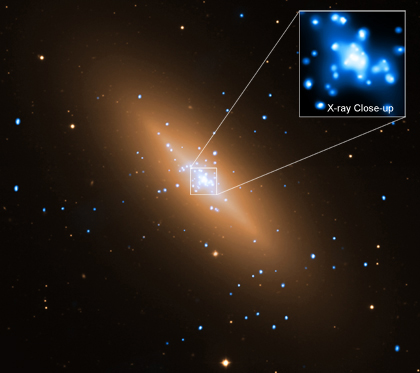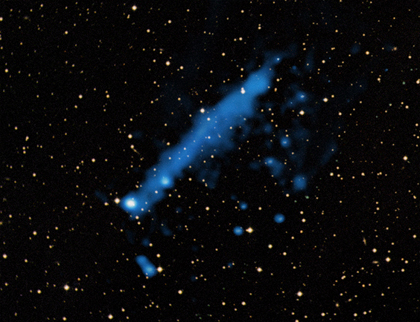Music Meets Astronomy at the Newport Folk Festival
Ever since we publicized the "deepest note in the Universe" in 2003, I have admired outreach efforts that combine music and astronomy. These efforts have continued this summer and fall with a program by Don Lubowich, from Hofstra University, who has organised astronomy exhibits to be installed at a large number of music festivals and events. My small role in this program involved displaying images from the "From Earth to the Universe (FETTU)" exhibit on the first day of the Newport Folk Festival at the end of July, added to Don's astronomy banners which also included material from FETTU.

A Birthday Card for Chandra
This is a slightly abridged version of a note that was recently sent around to the Chandra team by Harvey Tananbaum (Director of the Chandra X-ray Center) and Roger Brissenden (CXC Manager and Deputy Director of the Harvard-Smithsonian Center for Astrophysics) to congratulate everyone on Chandra’s 12th birthday.
At The Youth Slam
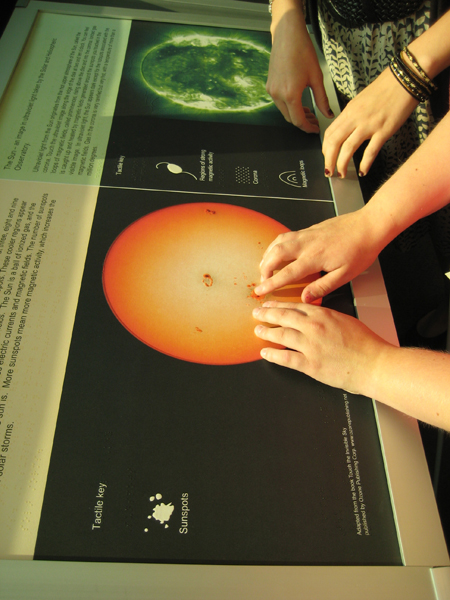
The International Year of Astronomy continues to reach new audiences. Photographs from the "From Earth to the Universe" (FETTU) gallery have been viewed by people all over the world in a variety of venues since 2009. A tactile version of the FETTU exhibit, based on the book Touch the Invisible Sky by Grice, Steel and Daou, was also created in 2009 so people could explore the multi-wavelength universe non-visually, by touch.
On July 20, 2011 the tactile FETTU exhibition continued on to the National Federation of the Blind (NFB) headquarters in Baltimore, Maryland. The images were examined by students attending the National Federation of the Blind Youth Slam - an innovative STEM enrichment program for high school students who are blind or have low vision. Noreen Grice was a course instructor for the Youth Slam Space Track and was on-site at the exhibition. She verbally described the color images as students explored the tactile counterparts by touch. The tactile FETTU exhibition will now be on permanent display at the National Federation of the Blind and will hopefully continue to excite a new generation of science enthusiasts.
-Noreen Grice
(Photos by N.Grice)
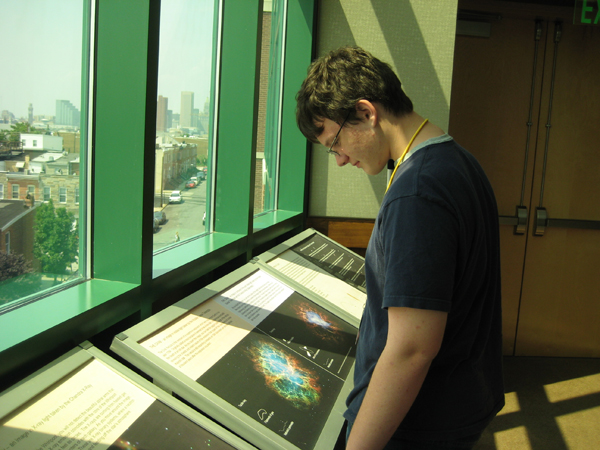

Chandra Images Gas Flowing Toward Black Hole
The galaxy NGC 3115 is shown here in a composite image of data from NASA's Chandra X-ray Observatory and the European Southern Observatory's Very Large Telescope (VLT). Using the Chandra image, the flow of hot gas toward the supermassive black hole in the center of this galaxy has been imaged. This is the first time that clear evidence for such a flow has been observed in any black hole.
Women in the High-Energy Universe: Kim Arcand
Kimberly Arcand has been a member of the Chandra Education & Public Outreach group since 1998. As the Media Production Coordinator, Kim's role includes oversight of a range of science outreach products and activities, including imaging and astronomical visualization, multimedia and print product development, exhibition creation and coordination, and development of museum/planetarium and broadcast products.
A Pulsar and its Mysterious Tail
A spinning neutron star is tied to a mysterious tail - or so it seems. Astronomers using NASA's Chandra X-ray Observatory have found that this pulsar, known as PSR J0357+3205 (or PSR J0357 for short), apparently has a long, X-ray bright tail streaming away from it.
This composite image shows Chandra data in blue and Digitized Sky Survey optical data in yellow. The two bright sources lying near the lower left end of the tail are both thought to be unrelated background objects located outside our galaxy.
A Time-lapsed View of Astronomy Night on the National Mall
On the evening of July 9th, as the intense heat of the summer sun on the National Mall faded into a cool breeze and sunlight gave way to a pale waxing gibbous moonlight, crowds quickly gathered at the National Air and Space Museum's public observatory for the 2nd annual Astronomy Night on the National Mall event.
Your browser does not support the video tag.
Astronomy on Display in DC
DC area Astronomy Night on the National Mall changed to Saturday July 9, 6-11 PM due to weather!
For those of you in or around the Nation's Capitol this post-July 4th week, be sure to take note of a free event happening in the heart of DC. On July 8th, from 6pm to 11pm, there will be all sorts of astronomy activities - including star gazing if weather permits – on the National Mall between 4th and 7th Streets.
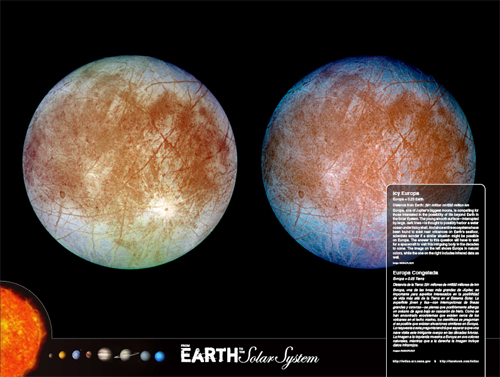
SAO + NASM = FETTSS @ SI
For those of you who don’t like acronyms (or who don't work for the government), the title of this post is probably indecipherable. It does, however, have quite a bit of meaning.
The translation into English is "Smithsonian Astrophysical Observatory and National Air and Space Museum makes "From Earth to the Solar System at the Smithsonian Institution."
Chandra & the Carnival of Space
The Carnival of Space is a round up of astronomy and space-related blogs that started back in 2007. Every week, a different webmaster or blogger hosts the carnival, showcasing articles written on the topic of space. This week, it's our turn to host the Carnival here on the Chandra blog. Enjoy!
Welcome to this week’s Carnival of Space. We’ve got a lot to cover in the weekly blog carnival, so let’s jump right into it.
On WeirdWarp, Chris Dann features the latest view of the Centaurus A galaxy from the Hubble Space Telescope. This famous galaxy just seems to get better each time a telescope takes a new look.
Mike Simonsen at Simostronomy has an account of his recent trip to the Texas Star Party. Sounds like quite an event!

Over at Urban Astronomer, we find a write up of a newly discovered planetary system that didn't make too many headlines, but is fascinating nonetheless. This system apparently contains two giant planets around a pair of stars – a result that would have been pure science fiction just a few years ago.

